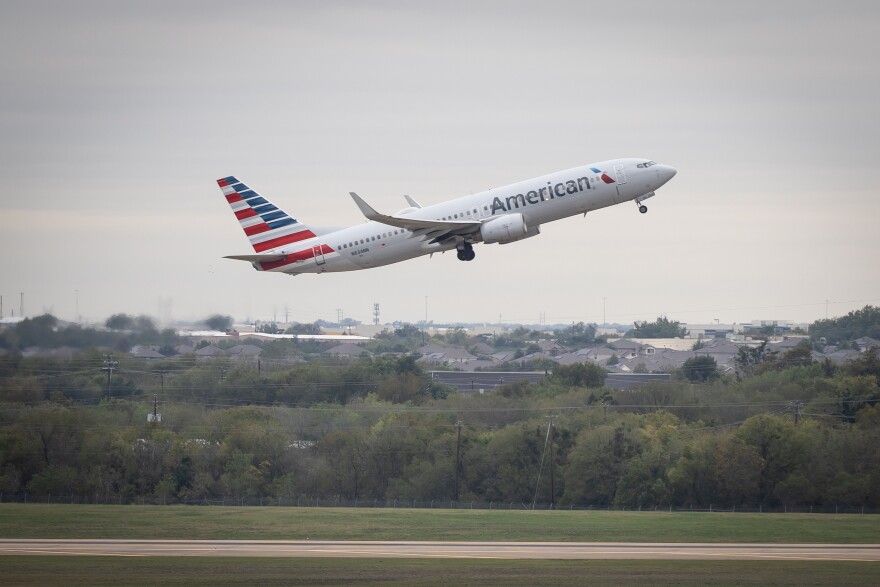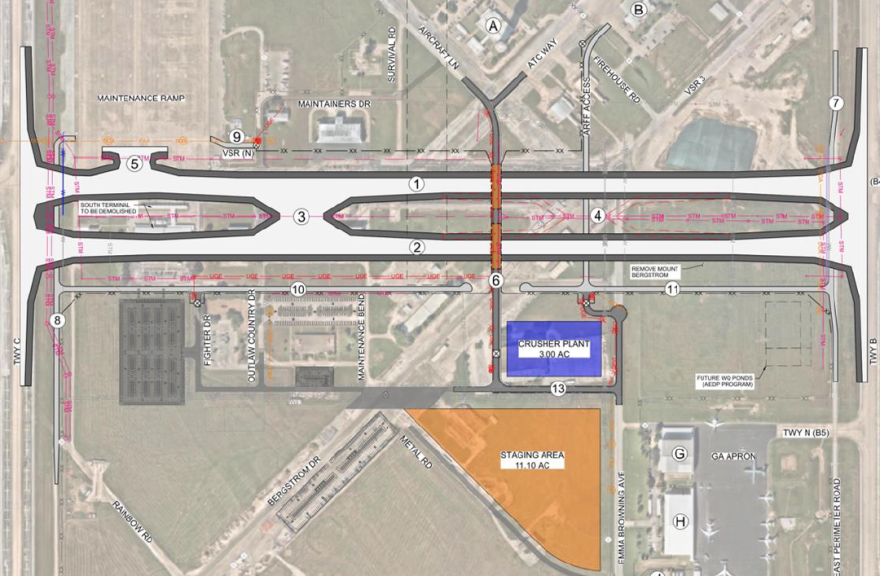American Airlines plans to eliminate five nonstop flights from Austin-Bergstrom International Airport this fall. The Fort Worth-based company, which has the second-largest presence at ABIA after Southwest, had already slashed 21 routes from its Austin schedule in January.
Starting in October, American will no longer fly to Reno, Nevada; Palm Springs, California; Las Vegas; Orlando, Florida; and New Orleans.
“We have not met our expectations this year,” American Airlines CEO Robert Isom said during a conference call with investors last week, even as the company reported record quarterly revenue of $14.3 billion.
Isom said American Airlines faced too much competition on domestic routes and had been forced to slash ticket prices more than expected. In response, the airline is slowing plans for expansion and even pulling back in markets like Austin.
“We’re making sure that we’re flying where we can produce the greatest level of profitability,” Isom said.
Austin has no other nonstop flights to Palm Springs or Reno. Southwest offers flights to New Orleans. Delta, Southwest and Spirit fly to Orlando. Las Vegas is one of the most heavily served destinations from Austin.
American will still fly nonstop to 17 destinations from Austin in 2025, an airport spokesperson said.

The airline’s decision to reduce flights from Austin follows years of frenzied post-pandemic passenger growth at ABIA that surprised even airport executives. Some months, flight offerings grew by 40 percent or more over pre-pandemic levels.
Now, traveler options are starting to recede as airlines predict lower demand in the months ahead even as ABIA continues to top passenger records.
“It was too much capacity added too fast,” said William Swelbar, an airline industry analyst with Swelbar-Zhong Consultancy. He identified similar patterns in cities like Las Vegas and Orlando.
“Today, we see a consumer that’s struggling a bit. The savings account is not as full as it was, and interest rates are taking a bite out of disposable income,” Swelbar observed. “We’re not seeing the kind of ‘revenge travel’ that destinations like Austin attracted during the pandemic,” he said, referring to the vacation boom that followed lockdowns.
Meanwhile, some airlines are expanding at ABIA. Delta Airlines launched 11 new flights from Austin in April, representing a 20 percent increase in service over last year.
Ultra-low-cost airline Allegiant will stop service to 12 routes this summer. But that decision was driven by the city’s move to demolish the South Terminal, a separate three-gate facility used by Allegiant and Frontier that is in the path of a planned airport expansion.

Overall, the trend is downward.
City airport officials predict seat capacity – an industry metric that captures both the number of flights and seats on a plane – will decline by 10 percent in August, fall by 9 percent in September and drop by 5 percent in October as airlines trim their offerings.
“Inflation has affected some travel habits for those on a tighter budget,” ABIA business development director Jamy Kazanoff told the city’s airport commission this month.
But Kazanoff highlighted data showing traveler volumes were still hitting unprecedented highs, even as airlines cut seat capacity. May was the busiest month ever at Austin’s airport, with more than 2 million passengers.
“We had room to grow even though we lost some capacity,” Kazanoff said.
As of July, ABIA still offered nonstop flights to 91 destinations – a 44 percent increase over 2019.
This story was produced as part of the Austin Monitor’s reporting partnership with KUT. This story has been changed since publication to correct the spelling of Robert Isom’s name.
The Austin Monitor’s work is made possible by donations from the community. Though our reporting covers donors from time to time, we are careful to keep business and editorial efforts separate while maintaining transparency. A complete list of donors is available here, and our code of ethics is explained here.

